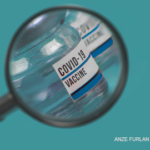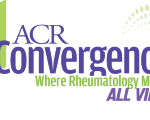In phase 1b, essential workers will take priority. This includes teachers, emergency responders, corrections officers and those who work in the food industry, agriculture, utilities and transportation, none of whom can avoid contact with other people. In phase 1c, priority will go to adults who are older than 65 years or have comorbid conditions that place them at risk for poor outcomes from COVD-19. Together, these phases represent another 250 million Americans. Again to put this in perspective, the U.S. government has currently purchased enough vaccine from Pfizer and Moderna to vaccinate 100 million Americans.12 Total.
What makes these decisions even more weighty is the implied ethical decisions. If we wish to limit mortality, the elderly should be vaccinated first. If we wish to limit disease spread, then vaccinating essential workers makes more sense. But people who work in childcare, elder care and public transportation have even higher rates of developing COVID-19 than other essential workers; shouldn’t they hop to the front the list?13 On the other hand, vaccinating teachers first may allow us to open schools earlier than would have been possible otherwise. The incarcerated pose a particularly sticky issue: It is impossible to socially distance in prison. Where should they fall in line?
There are also many unknowns: How effective will these vaccines be in immunocompromised or immunosuppressed patients? More specifically, will the RNA-based vaccines cause lupus patients to flare by inducing a type I interferon response? And how good are these vaccines at preventing the asymptomatic infections that are responsible for much of the pandemic? The AstraZeneca vaccine reduces SARS-CoV-2 RNA-positivity among asymptomatic patients, but what about the Moderna and Pfizer vaccines? We just don’t know.14
Of course, none of this may matter if no one agrees to get vaccinated.
In November, the Pew Research Center conducted a survey of 12,648 Americans and found that 60% would be willing to be vaccinated against SARS-CoV-2.15 In most ways, that’s good news. First, we assume that interest in the vaccine will climb as friends and neighbors continue to be hospitalized with COVID-19 in ever escalating numbers. Second, an additional 21% of those surveyed would probably be willing to receive the vaccine; they just want more information. And they want to see others go first. That brings us to 81%, which is around what we would need to achieve herd immunity; if four out of every five Americans agree to be vaccinated, we may be able to hamper the spread of SARS-CoV-2 just enough to tame the pandemic.



